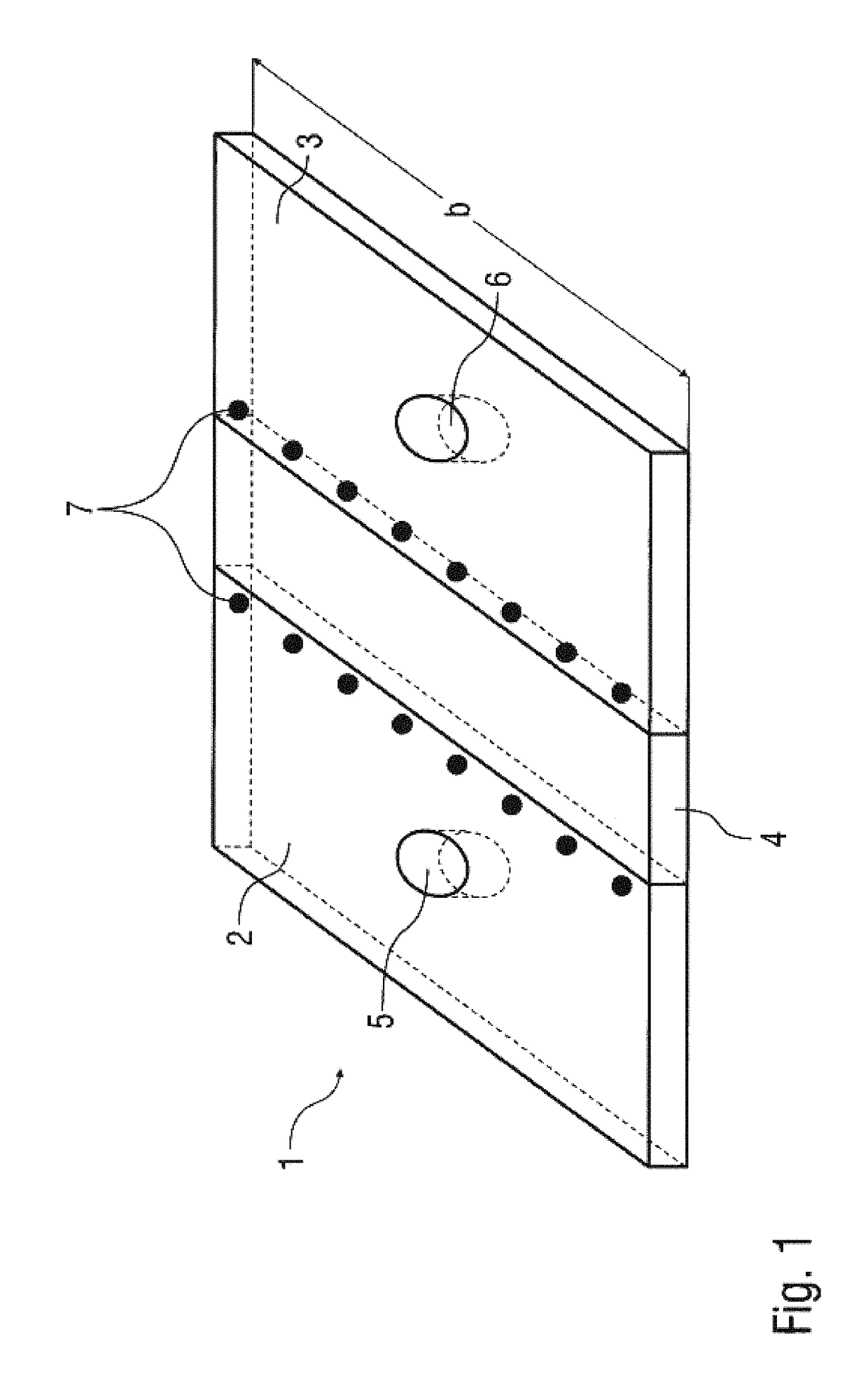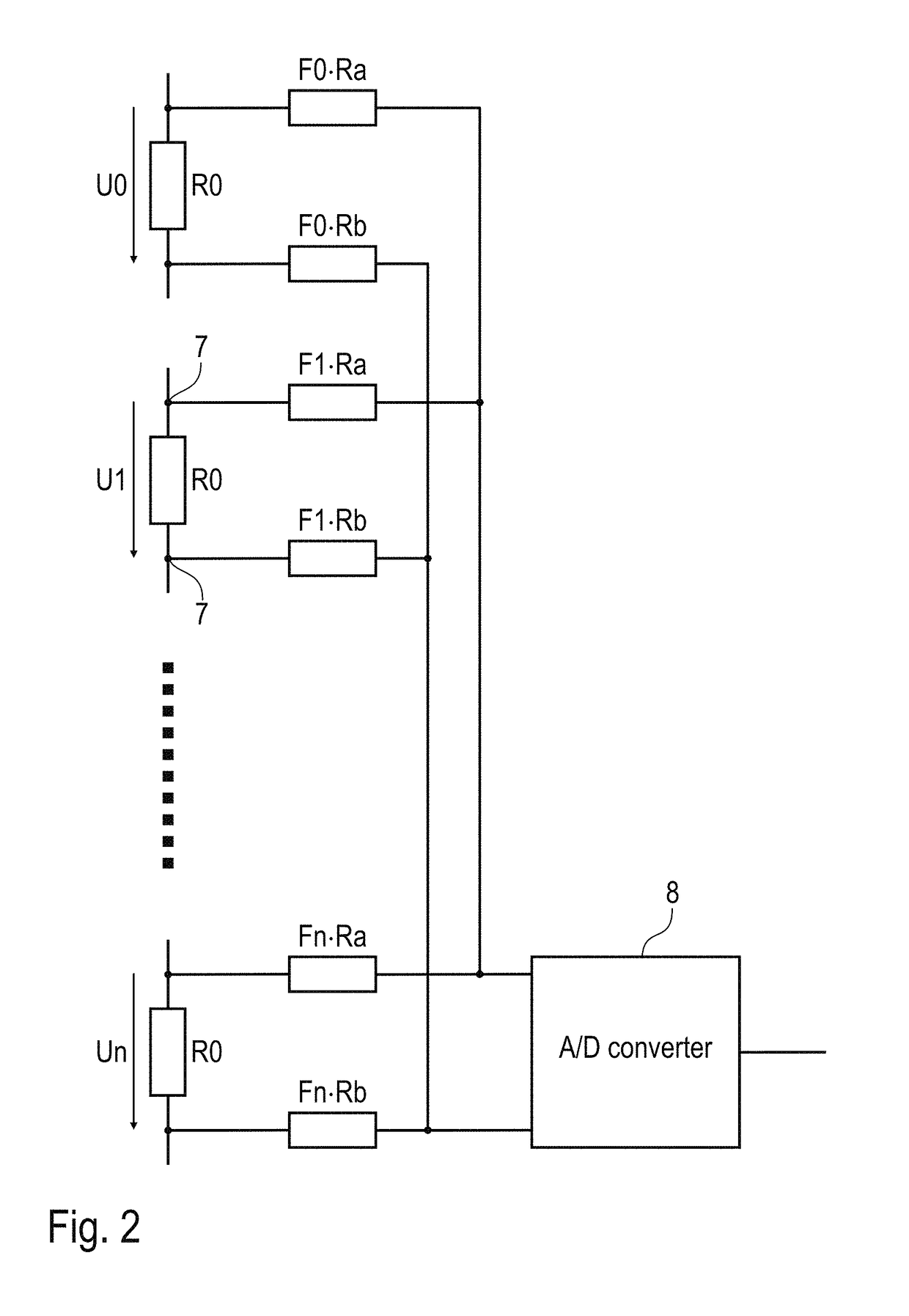Measuring resistor and corresponding measuring method
a resistor and resistor technology, applied in the field of measuring resistors, can solve problems such as errors in the calculation of electric current, and achieve the effect of improving the modeling of spatial variations in current density and good measurement-based correction
- Summary
- Abstract
- Description
- Claims
- Application Information
AI Technical Summary
Benefits of technology
Problems solved by technology
Method used
Image
Examples
Embodiment Construction
[0045]FIG. 1 shows a planar current sense resistor 1 for measuring current in accordance with the known four-wire technique. The current sense resistor 1 has a mainly conventional design, so additional reference is made to patent application EP 0 605 800 A1, the content of which can therefore be incorporated in full in the present description.
[0046]The current sense resistor 1 essentially comprises two planar connection parts made of a conductive material (e.g. copper or a copper alloy) and a resistor element 4 which is likewise planar and is made of a low-resistance resistive material (e.g. Manganin®). The electric current to be measured is here fed into the connection part 2 then flows through the resistor element 4 and then exits the current sense resistor via the other connection part 3.
[0047]For conducting the electric current in and out, the connection parts 2, 3 each have one or more holes 5, 6, to which connecting contacts, for example, can be screw-fastened.
[0048]In this ex...
PUM
 Login to View More
Login to View More Abstract
Description
Claims
Application Information
 Login to View More
Login to View More - R&D
- Intellectual Property
- Life Sciences
- Materials
- Tech Scout
- Unparalleled Data Quality
- Higher Quality Content
- 60% Fewer Hallucinations
Browse by: Latest US Patents, China's latest patents, Technical Efficacy Thesaurus, Application Domain, Technology Topic, Popular Technical Reports.
© 2025 PatSnap. All rights reserved.Legal|Privacy policy|Modern Slavery Act Transparency Statement|Sitemap|About US| Contact US: help@patsnap.com



